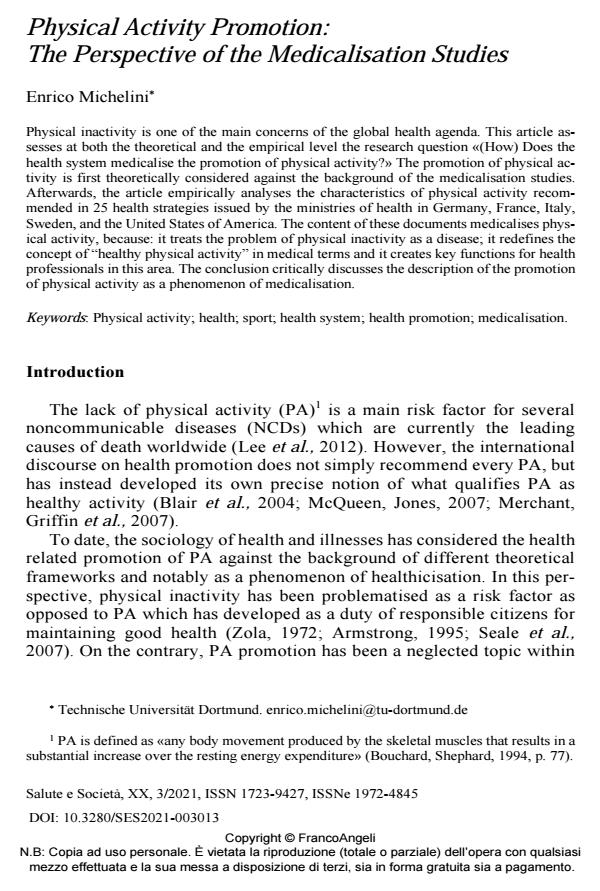Physical Activity Promotion: The Perspective of the Medicalisation Studies
Titolo Rivista SALUTE E SOCIETÀ
Autori/Curatori Enrico Michelini
Anno di pubblicazione 2021 Fascicolo 2021/3
Lingua Inglese Numero pagine 16 P. 206-221 Dimensione file 253 KB
DOI 10.3280/SES2021-003013
Il DOI è il codice a barre della proprietà intellettuale: per saperne di più
clicca qui
Qui sotto puoi vedere in anteprima la prima pagina di questo articolo.
Se questo articolo ti interessa, lo puoi acquistare (e scaricare in formato pdf) seguendo le facili indicazioni per acquistare il download credit. Acquista Download Credits per scaricare questo Articolo in formato PDF

FrancoAngeli è membro della Publishers International Linking Association, Inc (PILA)associazione indipendente e non profit per facilitare (attraverso i servizi tecnologici implementati da CrossRef.org) l’accesso degli studiosi ai contenuti digitali nelle pubblicazioni professionali e scientifiche
Physical inactivity is one of the main concerns of the global health agenda. This article assess-es at both the theoretical and the empirical level the research question «(How) Does the health system medicalise the promotion of physical activity?» The promotion of physical activity is first theoretically considered against the background of the medicalisation studies. Afterwards, the article empirically analyses the characteristics of physical activity recommended in 25 health strategies issued by the ministries of health in Germany, France, Italy, Sweden, and the United States of America. The content of these documents medicalises physical activity, be-cause: it treats the problem of physical inactivity as a disease; it redefines the concept of "healthy physical activity" in medical terms and it creates key functions for health profession-als in this area. The conclusion critically discusses the description of the promotion of physical activity as a phenomenon of medicalisation.
Parole chiave:Physical activity; health; sport; health system; health promotion; medicalisation.
Enrico Michelini, Physical Activity Promotion: The Perspective of the Medicalisation Studies in "SALUTE E SOCIETÀ" 3/2021, pp 206-221, DOI: 10.3280/SES2021-003013